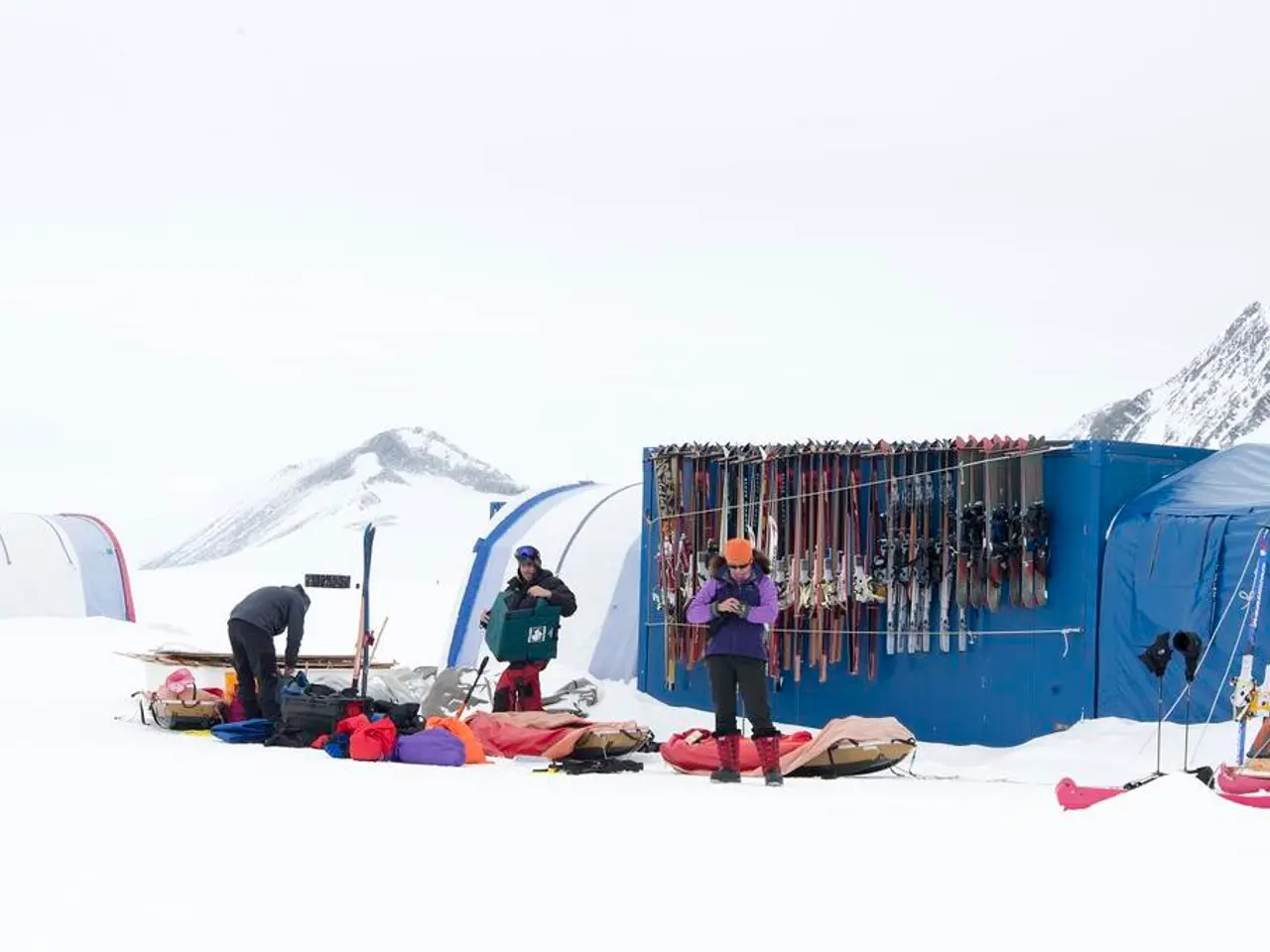Outdoor Enthusiasts Warned of Avalanche Risks in Off-Piste Areas
The New Zealand Avalanche Advisory (NZAA) has kicked off the winter season early, with forecasters set to update regional forecasts at avalanche.net.nz as new information becomes available. This early start is due to the current weather systems that have blanketed the Southern Alps and other regions with snow, leading to an uncertain start to the season.
The lack of data available to avalanche forecasters is a concern, given the time of year. This means there will be an extra layer of uncertainty for a few weeks. However, many regions, including Tongariro in the North Island, Fiordland, Wanaka, and others, will begin forecasting over the coming days.
The snowfall is predicted to be quite variable across the regions. While the Southern Alps have been heavily blanketed, more snow is expected over the coming week. This early snowfall should set up for a great season ahead by setting an excellent base. However, it's important to pick the right moment to step out for the first time safely.
The NZAA advises caution for backcountry skiing and snowboarding, with some regions classified as 'high' avalanche danger. This includes Arthur's Pass, Craigieburn Range, Aoraki/Mt Cook, and the new Aspiring region. In the new Aspiring Avalanche Observation Area, which includes Mt. Aspiring National Park, Mt. Brewster, the Treble Cone backcountry, and the Main Divide area, the avalanche danger is classified as 'high'. This indicates very dangerous avalanche conditions where travel is not recommended.
Natural and human-triggered avalanches are likely in areas classified as 'high' avalanche danger. Nelson Lakes is classified as 'considerable' avalanche danger, meaning caution is advised.
MSC Chief Executive, Daisley, advises conservative decision-making due to the lack of data and uncertain conditions. Ski areas, guiding operations, and heli ski companies are not yet fully operational, contributing to the lack of data available to avalanche forecasters.
The NZAA, owned by MSC, will continue to update the 13 regional forecasts as new information becomes available. Checking the latest avalanche advisory will help find out not only where is safe but also which regions will have some of the better conditions once things settle. So, before you head out for your winter adventures, make sure to check the NZAA's forecasts to ensure a safe and enjoyable experience.
Read also:
- Stunning movie credit attributed to a wandering Giant Pacific Octopus, snatching the camera from its owner!
- Limited-Time Offer at bet365 Kansas: Secure $150 in Bonus Bets with Code TOPACTION, Applicable for Royals, Chiefs, or Any Team Participation
- Casino operator's parent company alleges Kazuo Okada wrongfully seized control through violent means at Okada Manila.
- Apple's upcoming gadgets for mobile professionals and location-independent workers








